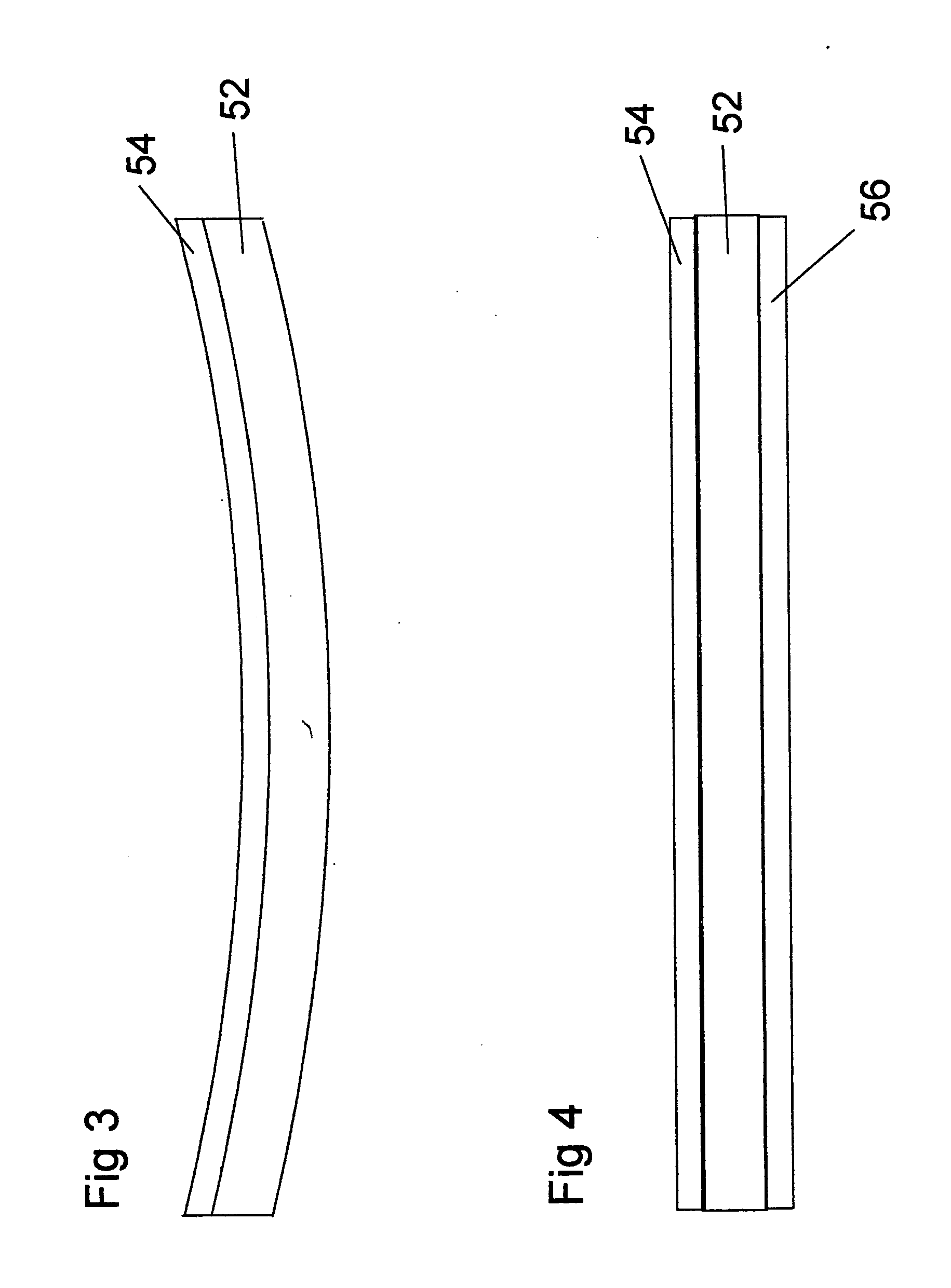Composite solder transfer moldplate structure and method of making same
a technology of composite solder transfer and moldplate, which is applied in the direction of soldering equipment, manufacturing tools,auxillary welding devices, etc., can solve the problems of reworking or discarded parts, significant challenges in the production of borosilicate glass solder transfer moldplates, and defect-prone key processing steps. achieve the effect of simple and inexpensive process and easy production
- Summary
- Abstract
- Description
- Claims
- Application Information
AI Technical Summary
Benefits of technology
Problems solved by technology
Method used
Image
Examples
example
[0063] It has been found that whereas conventional glass solder transfer moldplates require substantial effort to achieve defect-free cavity densities of 0.004 inch (0.1 mm) diameter cavities on 0.008 inch (0.2 mm) centers, laser-drilled composite solder transfer moldplates have readily achieved finer 0.003 inch (0.08 mm) diameter cavities on 0.006 inch (0.15 mm) centers without defects. Thus, the extendibility of this simplified composite structure is demonstrated.
[0064] Since an important aspect of this invention deals with the cavities in the composite solder transfer moldplate structure, details of the laser machining process used to produce the cavities are provided below.
[0065] Laser drilling is performed on a ESI 5210 Laser Microvia System provided by Electo Scientific Industries, Inc. of Portland, Oreg. A frequency-tripled Nd:YAG laser operating at a wavelength of 355 nanometers is used. The pulse width of the laser is on the order of 50 nanoseconds. The output of the lase...
PUM
| Property | Measurement | Unit |
|---|---|---|
| wavelength | aaaaa | aaaaa |
| power | aaaaa | aaaaa |
| thickness | aaaaa | aaaaa |
Abstract
Description
Claims
Application Information
 Login to View More
Login to View More - R&D
- Intellectual Property
- Life Sciences
- Materials
- Tech Scout
- Unparalleled Data Quality
- Higher Quality Content
- 60% Fewer Hallucinations
Browse by: Latest US Patents, China's latest patents, Technical Efficacy Thesaurus, Application Domain, Technology Topic, Popular Technical Reports.
© 2025 PatSnap. All rights reserved.Legal|Privacy policy|Modern Slavery Act Transparency Statement|Sitemap|About US| Contact US: help@patsnap.com



